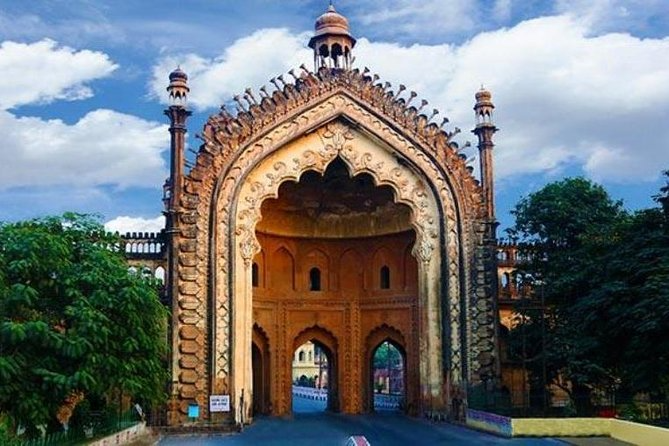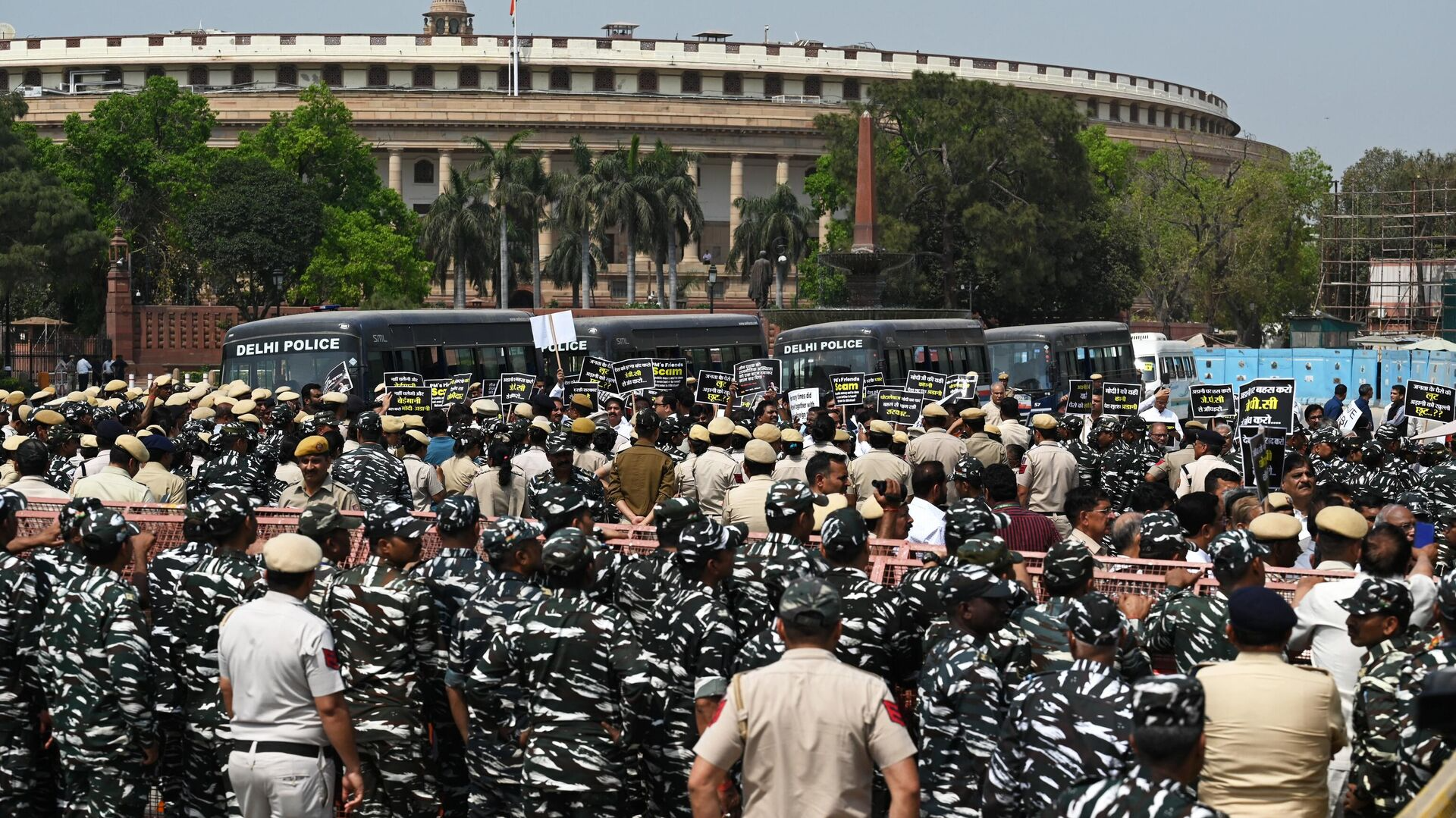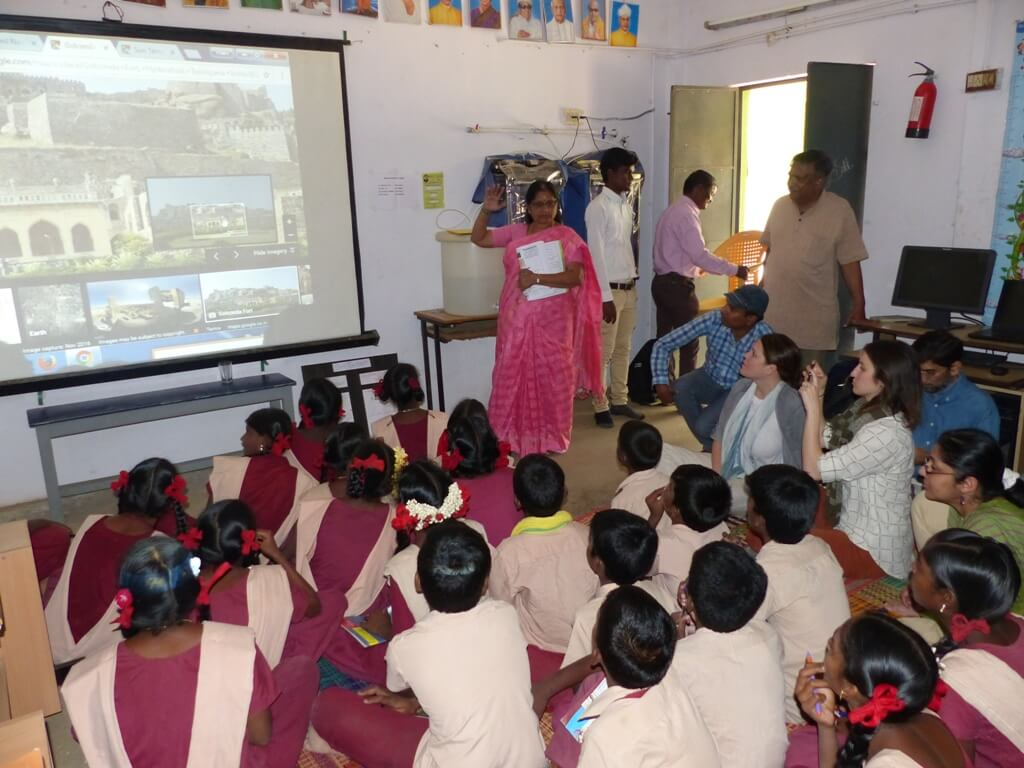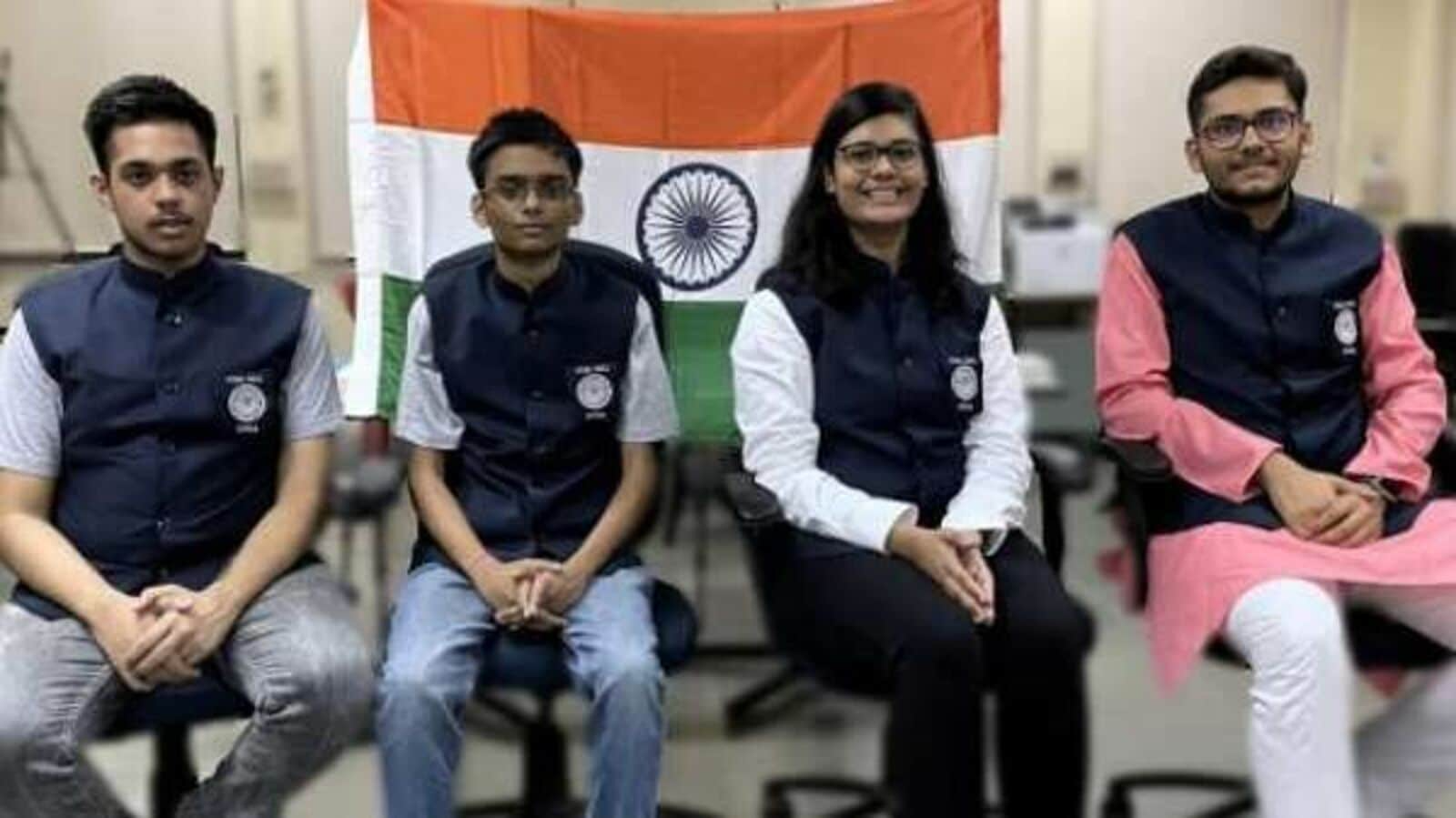Lucknow Heritage Walk Program Begins
Posted On July 11, 2025

The city of Lucknow, often hailed as the "City of Nawabs" for its rich cultural heritage and historical grandeur, has officially launched an expanded and invigorated Heritage Walk Program. This initiative, spearheaded by the Uttar Pradesh Tourism Department in collaboration with various private tour operators and local heritage enthusiasts, aims to offer both residents and tourists an immersive journey through the city's labyrinthine lanes, magnificent monuments, and vibrant bazaars, unraveling the tales of its glorious past. The program's formal commencement marks a renewed focus on promoting responsible tourism and showcasing the unique blend of Awadhi, Mughal, and British influences that shape Lucknow's distinctive character.
Lucknow's history is a captivating tapestry woven with threads of poetic refinement, architectural splendor, and significant historical events, particularly during the reign of the Nawabs of Awadh and the tumultuous period of the 1857 Indian Rebellion. For too long, much of this rich heritage remained scattered or accessible only to those with deep local knowledge. The Heritage Walk Program seeks to systematically curate and present these historical narratives, allowing participants to experience the city's soul on foot and connect with its bygone eras in a tangible way. The newly introduced program features a diverse range of themed walks, each meticulously designed to highlight specific facets of Lucknow's heritage. While the exact schedules and starting points vary depending on the specific tour operator and theme, common routes and focal points include-
The Awadhi Royal Trail (Husainabad Heritage)- This walk often begins around the iconic Rumi Darwaza, the majestic Turkish Gate that stands as a symbol of Lucknow. It typically proceeds to the Bara Imambara, a colossal architectural marvel renowned for its unsupported central hall and the enigmatic Bhool Bhulaiya (labyrinth). Participants then explore the exquisite Chhota Imambara, often called the "Palace of Lights" due to its ornate chandeliers and intricate decorations. Other significant stops on this trail may include the Husainabad Clock Tower and the Picture Gallery, offering glimpses into the opulence and artistry of the Nawabi era. These walks delve into the history of the Nawabs, their patronage of arts and architecture, and the syncretic culture they fostered.
The British Residency (Retracing 1857)- This poignant walk takes visitors through the ruins of the British Residency, a site of immense historical significance during the First War of Indian Independence in 1857. Guides narrate the harrowing 148-day siege, bringing to life the stories of bravery, sacrifice, and resilience etched into its bullet-ridden walls. This tour often includes visits to the graves within the Residency complex and provides a stark contrast to the Nawabi splendor, highlighting the clash of empires and cultures.
Colonial Lucknow and Hazratganj- This walk explores the colonial charm of areas like Hazratganj, the city's premier shopping and commercial hub that evolved during the British Raj. It delves into the architectural styles, the evolution of urban spaces, and the social dynamics of the era. Key points of interest might include the GPO (General Post Office), old cinemas, and discussions about how Lucknow adapted and transformed under British influence, blending Victorian aesthetics with local sensibilities.
Chowk and Old City Culinary & Craft Trail- Beyond monuments, Lucknow is celebrated for its unique culinary delights and traditional crafts. This walk, often starting in the bustling Chowk area, immerses participants in the sensory experience of Old Lucknow. It explores narrow alleys where artisans still practice traditional crafts like Chikankari embroidery, Zardozi work, and the making of ittar (traditional perfumes). Crucially, these walks incorporate food tastings, allowing participants to savor authentic Lucknawi delicacies like galawati kebabs, biryani, chaats, and local sweets, providing a taste of the city's legendary gastronomy.
Many of these heritage walks are led by highly knowledgeable local storytellers and expert guides who are often native to Old Lucknow or possess a deep academic understanding of its history and culture. They go beyond mere facts, sharing anecdotes, local legends, and personal insights that bring the historical sites to life. Some premium tours even offer unique experiences like dinner at ancestral homes of aristocratic families, providing an intimate glimpse into Lucknow's enduring aristocratic traditions.
The benefits of the Lucknow Heritage Walk Program are manifold-
Cultural Preservation- It plays a crucial role in preserving and promoting Lucknow's rich heritage, ensuring that the stories and significance of its historical sites are passed down to new generations.
Tourism Promotion- It enhances Lucknow's appeal as a cultural tourism destination, attracting both domestic and international visitors seeking authentic historical and cultural experiences.
Local Economy Boost- The program creates employment opportunities for local guides, artisans, and food vendors, contributing to the local economy.
Community Engagement- By involving local communities and heritage enthusiasts, it fosters a sense of ownership and pride in the city's legacy.
Educational Value- These walks offer an invaluable educational experience, providing historical context and cultural insights that go beyond what can be learned from textbooks or casual sightseeing.
While various private entities like Deep Dive India, India City Walks, and Tornos India have been offering specialized heritage walks in Lucknow for years, the formal launch and promotion by the Uttar Pradesh Tourism Department signifies a more organized and accessible approach. The department's website now clearly lists various heritage walk options, their themes, and contact information, making it easier for visitors to plan their immersive journeys.
The successful implementation and sustained popularity of the Lucknow Heritage Walk Program will depend on continued collaboration between government bodies, private operators, and local communities. Regular training for guides, maintenance of historical sites, and effective marketing are essential. By providing structured yet authentic experiences, Lucknow aims to strengthen its identity as a cultural capital and invite the world to discover the timeless charm and elegance of its Nawabi past.
Lucknow's history is a captivating tapestry woven with threads of poetic refinement, architectural splendor, and significant historical events, particularly during the reign of the Nawabs of Awadh and the tumultuous period of the 1857 Indian Rebellion. For too long, much of this rich heritage remained scattered or accessible only to those with deep local knowledge. The Heritage Walk Program seeks to systematically curate and present these historical narratives, allowing participants to experience the city's soul on foot and connect with its bygone eras in a tangible way. The newly introduced program features a diverse range of themed walks, each meticulously designed to highlight specific facets of Lucknow's heritage. While the exact schedules and starting points vary depending on the specific tour operator and theme, common routes and focal points include-
The Awadhi Royal Trail (Husainabad Heritage)- This walk often begins around the iconic Rumi Darwaza, the majestic Turkish Gate that stands as a symbol of Lucknow. It typically proceeds to the Bara Imambara, a colossal architectural marvel renowned for its unsupported central hall and the enigmatic Bhool Bhulaiya (labyrinth). Participants then explore the exquisite Chhota Imambara, often called the "Palace of Lights" due to its ornate chandeliers and intricate decorations. Other significant stops on this trail may include the Husainabad Clock Tower and the Picture Gallery, offering glimpses into the opulence and artistry of the Nawabi era. These walks delve into the history of the Nawabs, their patronage of arts and architecture, and the syncretic culture they fostered.
The British Residency (Retracing 1857)- This poignant walk takes visitors through the ruins of the British Residency, a site of immense historical significance during the First War of Indian Independence in 1857. Guides narrate the harrowing 148-day siege, bringing to life the stories of bravery, sacrifice, and resilience etched into its bullet-ridden walls. This tour often includes visits to the graves within the Residency complex and provides a stark contrast to the Nawabi splendor, highlighting the clash of empires and cultures.
Colonial Lucknow and Hazratganj- This walk explores the colonial charm of areas like Hazratganj, the city's premier shopping and commercial hub that evolved during the British Raj. It delves into the architectural styles, the evolution of urban spaces, and the social dynamics of the era. Key points of interest might include the GPO (General Post Office), old cinemas, and discussions about how Lucknow adapted and transformed under British influence, blending Victorian aesthetics with local sensibilities.
Chowk and Old City Culinary & Craft Trail- Beyond monuments, Lucknow is celebrated for its unique culinary delights and traditional crafts. This walk, often starting in the bustling Chowk area, immerses participants in the sensory experience of Old Lucknow. It explores narrow alleys where artisans still practice traditional crafts like Chikankari embroidery, Zardozi work, and the making of ittar (traditional perfumes). Crucially, these walks incorporate food tastings, allowing participants to savor authentic Lucknawi delicacies like galawati kebabs, biryani, chaats, and local sweets, providing a taste of the city's legendary gastronomy.
Many of these heritage walks are led by highly knowledgeable local storytellers and expert guides who are often native to Old Lucknow or possess a deep academic understanding of its history and culture. They go beyond mere facts, sharing anecdotes, local legends, and personal insights that bring the historical sites to life. Some premium tours even offer unique experiences like dinner at ancestral homes of aristocratic families, providing an intimate glimpse into Lucknow's enduring aristocratic traditions.
The benefits of the Lucknow Heritage Walk Program are manifold-
Cultural Preservation- It plays a crucial role in preserving and promoting Lucknow's rich heritage, ensuring that the stories and significance of its historical sites are passed down to new generations.
Tourism Promotion- It enhances Lucknow's appeal as a cultural tourism destination, attracting both domestic and international visitors seeking authentic historical and cultural experiences.
Local Economy Boost- The program creates employment opportunities for local guides, artisans, and food vendors, contributing to the local economy.
Community Engagement- By involving local communities and heritage enthusiasts, it fosters a sense of ownership and pride in the city's legacy.
Educational Value- These walks offer an invaluable educational experience, providing historical context and cultural insights that go beyond what can be learned from textbooks or casual sightseeing.
While various private entities like Deep Dive India, India City Walks, and Tornos India have been offering specialized heritage walks in Lucknow for years, the formal launch and promotion by the Uttar Pradesh Tourism Department signifies a more organized and accessible approach. The department's website now clearly lists various heritage walk options, their themes, and contact information, making it easier for visitors to plan their immersive journeys.
The successful implementation and sustained popularity of the Lucknow Heritage Walk Program will depend on continued collaboration between government bodies, private operators, and local communities. Regular training for guides, maintenance of historical sites, and effective marketing are essential. By providing structured yet authentic experiences, Lucknow aims to strengthen its identity as a cultural capital and invite the world to discover the timeless charm and elegance of its Nawabi past.











